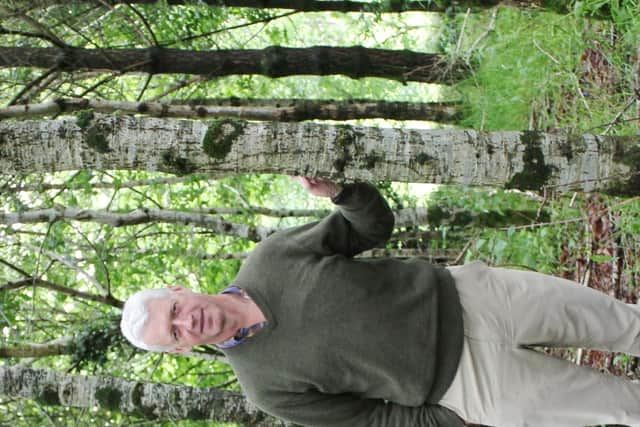Forest Service targets 50,000ha of additional tree cover by 2050
and live on Freeview channel 276
And this new planting target could be increased further by an additional c.20,000ha to compensate for forest to bog restoration–peatland previously planted out in trees mainly within the Forest Service Estate.
These figures were unveiled at a recent stakeholder meeting hosted by Forest Service. Premier Woodlands’ managing director, John Hetherington, was in attendance.
Advertisement
Advertisement
He commented: “The overarching target is to have 12% of Northern Ireland’s total land area planted in trees by 2050.


“The scale of the actual planting areas is a direct consequence of the binding target that is now legislated for within the Northern Ireland Climate Change Act.
“It’s my understanding that Forest Service will be publishing an action plan, one that clarifies how this future tree planting strategy will be implemented.”
According to the Premier Woodlands’s representative, annual tree planting rates of up to 2,500ha will have to be achieved between now and 2050, if the climate change targets are to be met.
Advertisement
Advertisement
“This is almost ten times the current planting figure,” he added.
“All of this is extremely positive, first and foremost as it places a high degree of certainty on the tree planting rates that must be achieved here in Northern Ireland over the coming two decades and more.
But where will the land come from to facilitate such an accelerated tree planting programme?
John Hetherington believes that the farming sector will be placed front and centre in this regard.
He explained:
“There are a number of options that can come into play -
Advertisement
Advertisement
Forest Service is the largest land owner in NI in its own right. So, it can optimise the organisations current resource. Buying more land is also an option. But at a minimum costof £10,000 + per acre, this may not be possible due to current financial constraints on the public purse.
“Water Service is also a major land own in the public sector. However, much of this is peatland or is environmentally sensitive andtherefore tree planting is not an option.
“Local Councils are also land owners in their own right. But, in this context, the areas available for tree planting are likely to be quite small.
“This then leaves farmers, who may well be expected to do most of the heavy lifting, from a future tree planting point of view. So it’s important that future forestry grant and support schemes recognise this fact.”
Advertisement
Advertisement
Turning to more immediate tree planting-related issues, John Hetherington confirmed that the closing date for the 2023 Forestry Expansion Scheme (FES) and Small Woodland Grant Schemes (SWGS) applications is: Thursday 31st August.
He commented: “This is the first year that FES will be fully supported by UK national funding.
“Up to this point, an element of European Union (EU) support had been available for the scheme.
“Looking ahead, it seems likely that FES, or a scheme similar to it, will be continued into the future, possibly with ongoing revisions or updates.
Advertisement
Advertisement
John Hetherington concluded: “The bottom line is that forestry and woodland development remain long term investment opportunities for farmers and landowners.
“And they need certainty, where future planning of this kind is required.”